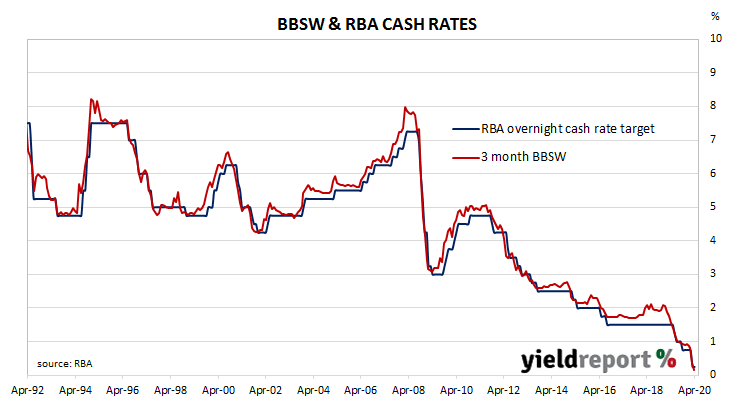The Reserve Bank of Australia left the official cash rate target at 0.25% at its April meeting, having made two 25bps cuts during March. The minutes of the special meeting of the RBA Board on 19 March had stated members had agreed “the cash rate was now at its effective lower bound” gave weight to the idea there would be no more rate cuts in this cycle.
The minutes of April’s meeting has now been released and the board’s deliberations again focussed on the coronavirus pandemic, the subsequent responses of central banks and governments, as well as the outcomes these responses achieved.
“Central banks had responded forcefully with a wide range of policy measures. In response to these measures and sizeable responses from fiscal authorities, financial conditions had stabilised but remained fragile.” Again, all sections of the minutes referred to the economic impact of the coronavirus.
Again, all sections of the minutes referred to the economic impact of the coronavirus.
A considerable amount of the minutes was devoted to discussions regarding the RBA’s recent policy measures and the responses of financial markets to those measures.
Those measures included the latest rate cut, the effective fixing of the yield on 3-year Commonwealth Government bonds at 0.25%, the support of Commonwealth and state government bond prices through purchases by the Bank as well as the provision of a term funding facility for authorised deposit-taking institutions (ADIs) which would offer collateralised funding of at least $90 billion for three years at a 0.25% interest rate. In addition, exchange settlement balances at the RBA would attract a 0.10% interest rate instead of a zero interest rate.
According to the RBA, these efforts “had helped to lower funding costs, “stabilise financial conditions” and “support the expected recovery”. The Bank’s policies had also eased stresses in the secondary markets for Commonwealth Government and state government bonds.
Tellingly, the RBA minutes stated the “Bank would continue to do what was necessary to achieve the three-year yield target, with the target expected to remain in place until progress was being made towards its goals for full employment and inflation.” However, the minutes also stated “if conditions continued to improve, it was likely that smaller and less frequent purchases of government bonds would be required.”

